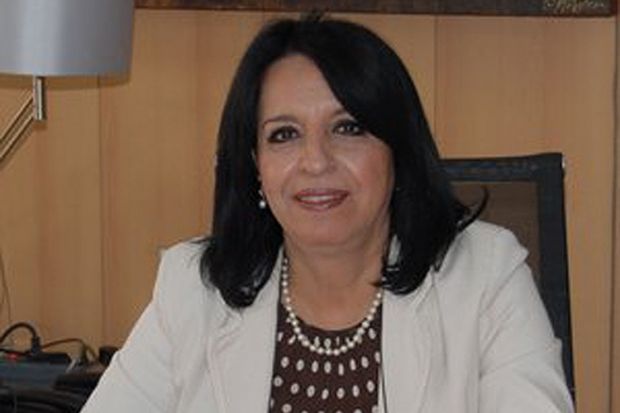The widespread use of English and French is a “blight” on universities across the Arab world because it forces students to study in a foreign language, an Algerian academic and poet has said.
Inam Bioud said that by not using the language of the man in the street, Arab university “elites” created a divide between them and their societies. She urged the region’s institutions to “embrace” a modernised Arabic.
A patchwork of Arabic, English and French is spoken in universities across the Middle East and North Africa, and there have been calls for them to switch to English to make their graduates more attractive to multinational companies looking to set up in the region.
At a conference in London, Dr Bioud said that students taught in Arabic at the primary and secondary level get a “linguistic shock” at university: “They are compelled to pursue their studies in a foreign language for which they are ill equipped.”
Unless Arab states decide to teach English or French to all learners, they should “embrace the Arabic language as the solution to our problem rather than continue to view it as a problem”, she said. Bilingualism can be good for a society, but “the presence of university elites who communicate in a foreign language…generates a divide between these elites and the societies in which they evolve”.
Dr Bioud, founding director of the Higher Arab Institute of Translation in Algiers, cautioned that if a move towards more Arabic is to work, the “huge deficit” of scientific works in the language must be addressed by an intensive translation programme. The paucity of scientific texts in Arabic meant there was a “lack of interest” in science in the region, she told the Gulf Education Conference, held last month.
Dr Bioud also declared that Arabic needed urgently to be modernised by simplifying its grammar, restoring its “scientific features” and removing the “shackles of priestly auras” around it.
Only 1.7 per cent of universities in the Middle East and North Africa are monolingual in Arabic, according to Higher Education Classification in the Middle East and North Africa: A Pilot Study, a report by the Institute of International Education.
One fifth used only English, whereas 37 per cent used a mixture of Arabic and French and just over a quarter used Arabic and English. Eleven per cent used all three languages, finds the report, which is based on a survey of 300 institutions across seven countries. With regard to student instruction, only 15 per cent of universities teach the humanities solely in Arabic, while “almost none” used the language for the sciences, the 2012 report says.
In the humanities, Morocco was the only country where a majority of universities used only Arabic. English dominates in the Gulf states of Qatar and the United Arab Emirates.
Register to continue
Why register?
- Registration is free and only takes a moment
- Once registered, you can read 3 articles a month
- Sign up for our newsletter
Subscribe
Or subscribe for unlimited access to:
- Unlimited access to news, views, insights & reviews
- Digital editions
- Digital access to THE’s university and college rankings analysis
Already registered or a current subscriber?





